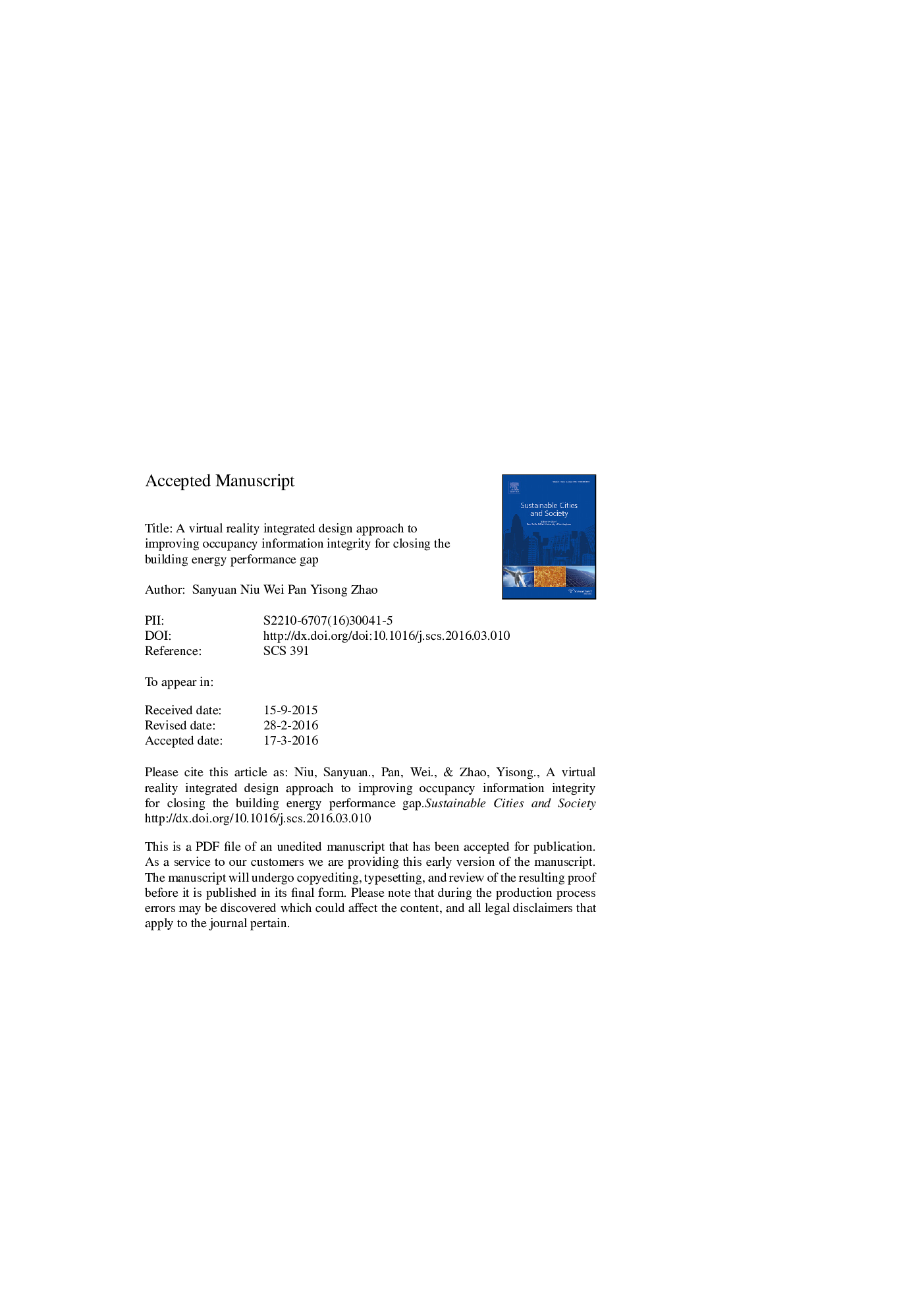| Article ID | Journal | Published Year | Pages | File Type |
|---|---|---|---|---|
| 4928302 | Sustainable Cities and Society | 2016 | 19 Pages |
Abstract
The energy performance gap has been realized to be a significant barrier to achieving low energy buildings. A predominant reason of the performance gap resides with the uncertainties of occupancy information, which leads to inappropriate design, unnecessary consumption and operation misconducts of occupants. Traditional methods of collecting occupancy information mainly rely on statistics from post-occupancy evaluations (Post-OE). However, there is a lack of use of pre-occupancy evaluation (Pre-OE) methods to understand the interaction between occupant behavior and building design alternatives. The aim of this paper is thus to develop a virtual reality (VR) integrated approach to improving occupancy information integrity in the building energy design process in order to close the performance gap. A Pre-OE design framework is first constructed to enable the use of VR technology to help building designers collect occupancy information and identify the design patterns that guide occupants to behave in the most energy-efficient way. The framework is then validated through a case study of the lighting control design of a typical residential flat in Hong Kong. The results suggest that the developed framework can facilitate designers in understanding occupants' behavior and identifying design alternatives that guide occupants to perform in accordance with design intentions. The adoption of higher-level VR technologies and multi-criteria decision-making methods is advocated for future research.
Related Topics
Physical Sciences and Engineering
Energy
Renewable Energy, Sustainability and the Environment
Authors
Sanyuan Niu, Wei Pan, Yisong Zhao,
